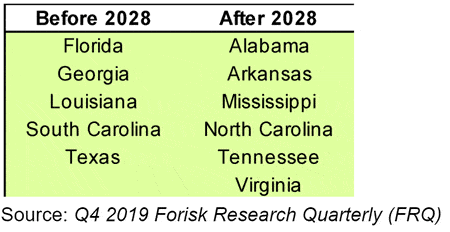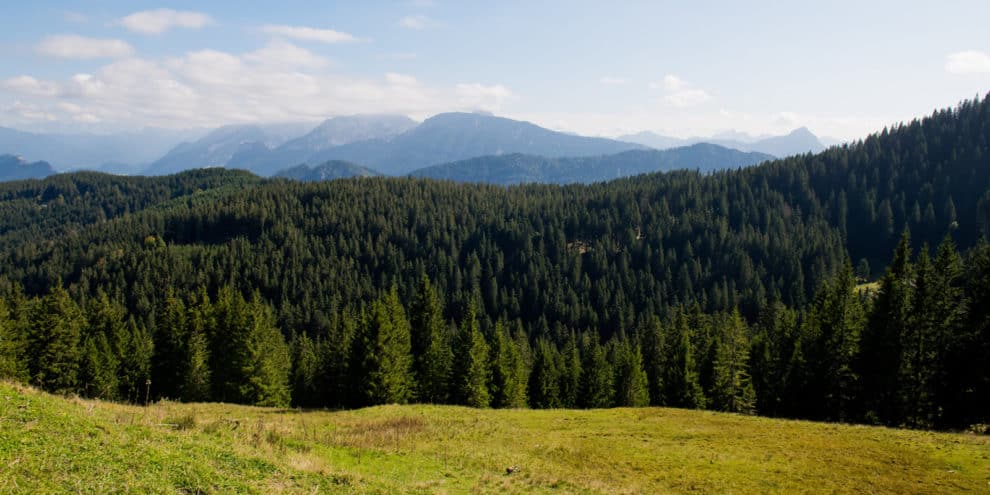At Forisk, our focus is operational, to better understand how things work, and forward-looking, to better help clients make decisions. In Q4 2019, we published research on the topic of projecting physical forest supplies, and the wide variance in supply-demand balances across the South. These variances matter because, while the United States as a whole grows more timber than it harvests, many local markets have more balance and better opportunities for “tension” to support price increases.
Projecting Forest Supplies
Timberland investors worry that trade disputes, election season frictions and a slowing world economy could lower U.S. demand for wood-framed housing and consumer products made from pulp. While these topics can occupy any hickory stump philosopher, our analytic work prioritizes physical market structures – the size and health of wood-using mills, the cost and reliability of supply chains, and the availability and sustainability of forest supplies – to better understand how timber prices and wood costs vary by wood basket.
Our Q4 2019 Forisk Research Quarterly (FRQ) featured research tested and updated annual projections of timber supply by state in the U.S. South. This modeling exercise provides a repeatable way to evaluate the implied inventories given the existing forest and our understanding of wood demand from manufacturers. Current projections find pine sawtimber inventories that peak and decline in the South in the next ten years (see Figure below). South-wide peak pine grade inventory occurs in 2025. The long-term grade projection ultimately declines to 2018 inventory levels by 2038. The story varies by state and local market within each state, as some continue to accumulate volume while others begin to contract sooner.
Figure: Tale of Two Forests: Peaking Pine Grade Inventories

Peaking pine grade inventories – those trees destined for sawmills and plywood facilities – indicate place where markets come into balance. That said, this look “over the horizon” occurs in a world with pine inventories much higher than they were prior to the Recession. Locally and regionally, in relative and absolute terms, forests in the South carry more volume now and in ten years than in 2009.
In natural resource and commodity-producing markets, excess inventories bleed prices. As noted in previous Forisk research, “the market requires lower prices to unload or workout surplus inventory…” Plentiful timber has been a boon for U.S. lumber manufacturers in the South. And as mills in Canada’s British Columbia continue to shutter, U.S. producers are positioned to benefit. Updated forest supply projections enhance this story as we now see growing evidence of market equilibrium in key markets.
This content may not be used or reproduced in any manner whatsoever, in part or in whole, without written permission of LANDTHINK. Use of this content without permission is a violation of federal copyright law. The articles, posts, comments, opinions and information provided by LANDTHINK are for informational and research purposes only and DOES NOT substitute or coincide with the advice of an attorney, accountant, real estate broker or any other licensed real estate professional. LANDTHINK strongly advises visitors and readers to seek their own professional guidance and advice related to buying, investing in or selling real estate.










Add Comment